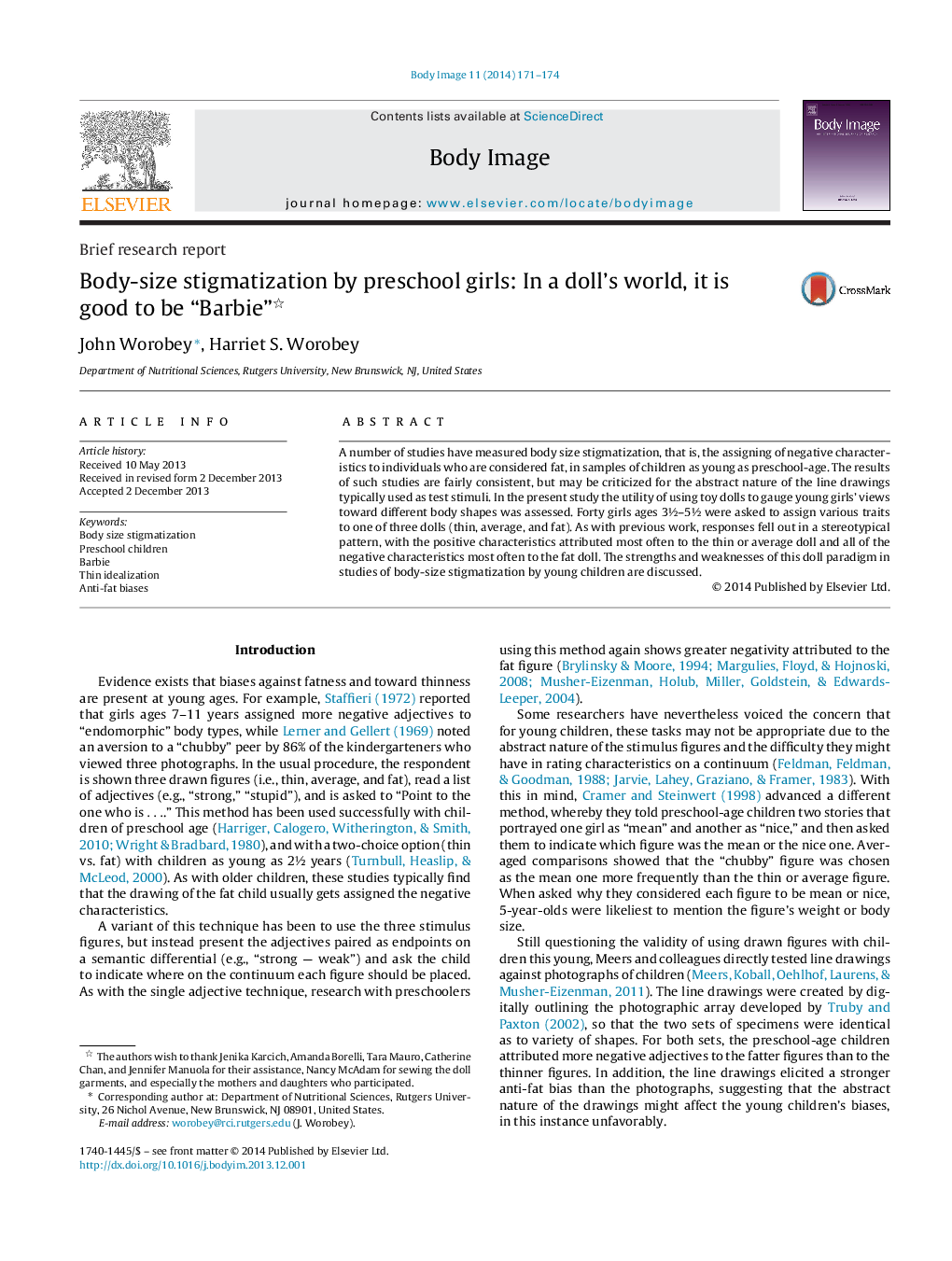| Article ID | Journal | Published Year | Pages | File Type |
|---|---|---|---|---|
| 902749 | Body Image | 2014 | 4 Pages |
•We examine the utility of dolls in measuring body shape preferences.•We replicate research that shows preschool age girls prefer thinness over fatness.•Dolls may be well-suited for measuring body preferences by preschool children.
A number of studies have measured body size stigmatization, that is, the assigning of negative characteristics to individuals who are considered fat, in samples of children as young as preschool-age. The results of such studies are fairly consistent, but may be criticized for the abstract nature of the line drawings typically used as test stimuli. In the present study the utility of using toy dolls to gauge young girls’ views toward different body shapes was assessed. Forty girls ages 3½–5½ were asked to assign various traits to one of three dolls (thin, average, and fat). As with previous work, responses fell out in a stereotypical pattern, with the positive characteristics attributed most often to the thin or average doll and all of the negative characteristics most often to the fat doll. The strengths and weaknesses of this doll paradigm in studies of body-size stigmatization by young children are discussed.
